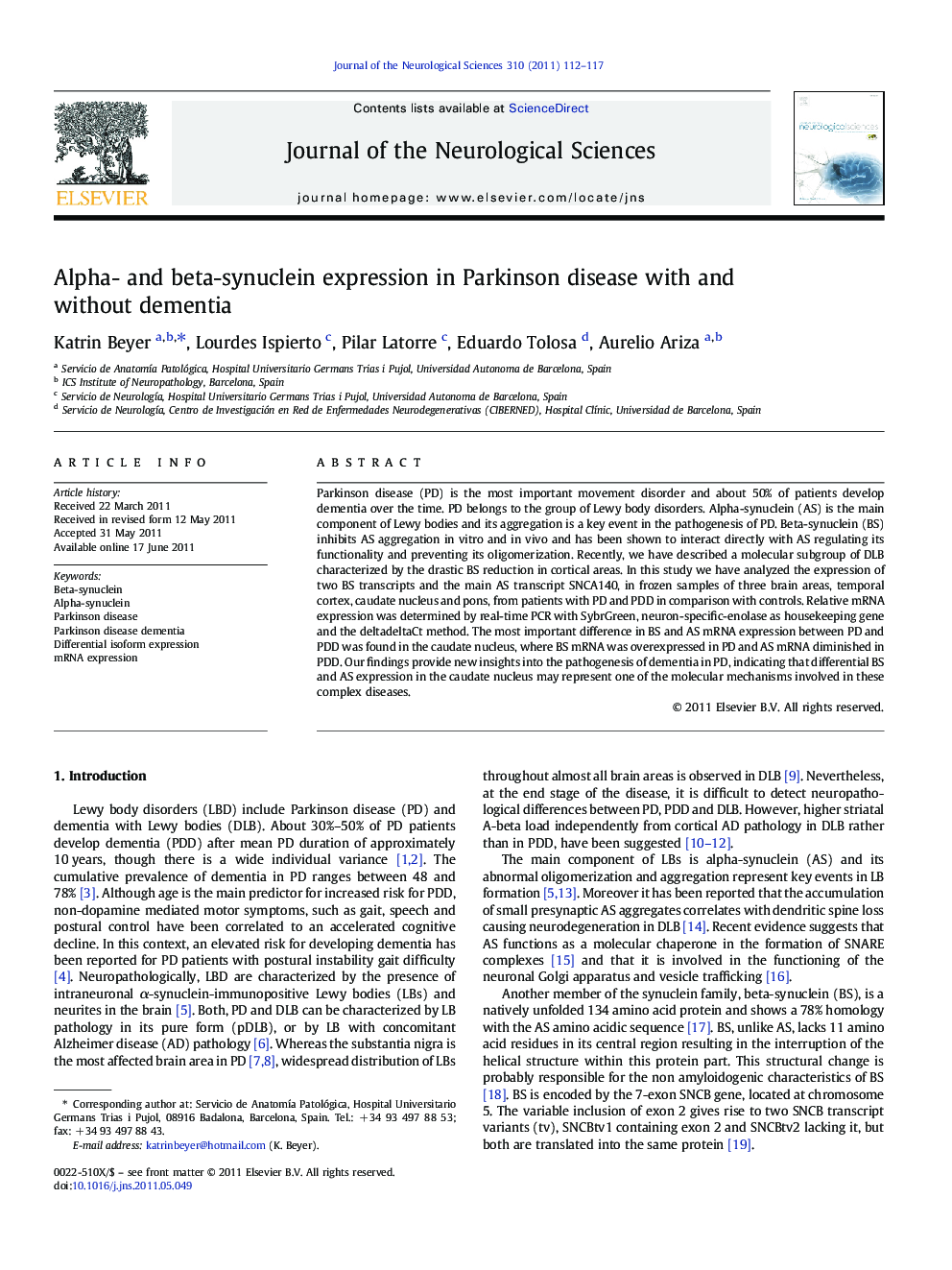| Article ID | Journal | Published Year | Pages | File Type |
|---|---|---|---|---|
| 8282132 | Journal of the Neurological Sciences | 2011 | 6 Pages |
Abstract
Parkinson disease (PD) is the most important movement disorder and about 50% of patients develop dementia over the time. PD belongs to the group of Lewy body disorders. Alpha-synuclein (AS) is the main component of Lewy bodies and its aggregation is a key event in the pathogenesis of PD. Beta-synuclein (BS) inhibits AS aggregation in vitro and in vivo and has been shown to interact directly with AS regulating its functionality and preventing its oligomerization. Recently, we have described a molecular subgroup of DLB characterized by the drastic BS reduction in cortical areas. In this study we have analyzed the expression of two BS transcripts and the main AS transcript SNCA140, in frozen samples of three brain areas, temporal cortex, caudate nucleus and pons, from patients with PD and PDD in comparison with controls. Relative mRNA expression was determined by real-time PCR with SybrGreen, neuron-specific-enolase as housekeeping gene and the deltadeltaCt method. The most important difference in BS and AS mRNA expression between PD and PDD was found in the caudate nucleus, where BS mRNA was overexpressed in PD and AS mRNA diminished in PDD. Our findings provide new insights into the pathogenesis of dementia in PD, indicating that differential BS and AS expression in the caudate nucleus may represent one of the molecular mechanisms involved in these complex diseases.
Keywords
Related Topics
Life Sciences
Biochemistry, Genetics and Molecular Biology
Ageing
Authors
Katrin Beyer, Lourdes Ispierto, Pilar Latorre, Eduardo Tolosa, Aurelio Ariza,
